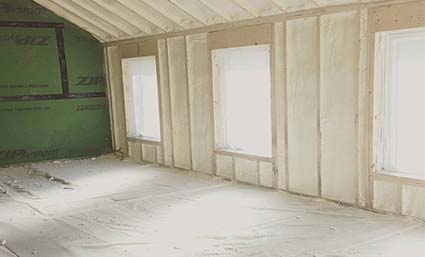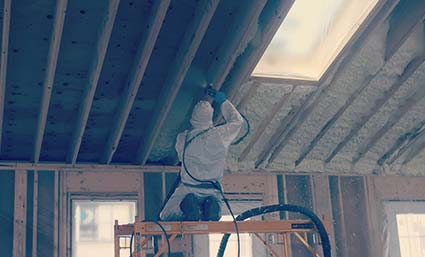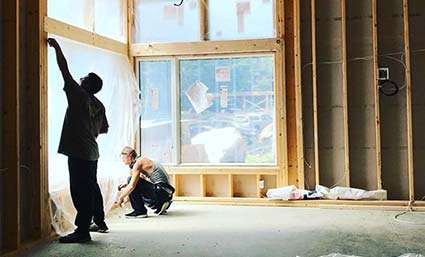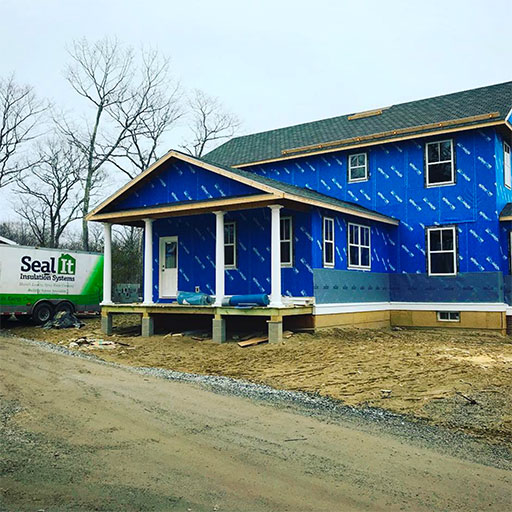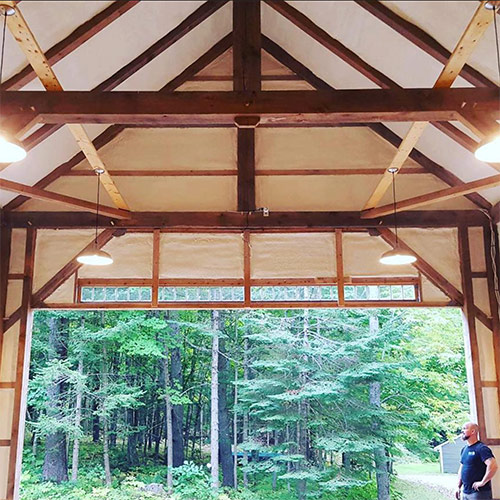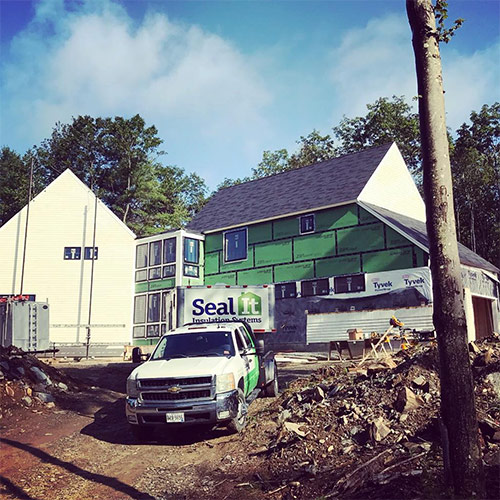Insulation is the unsung hero of a comfortable, energy-efficient Maine home. It keeps us warm in winter, cool in summer, and reduces energy costs year-round.
However, like everything else in our homes, insulation ages and can become less effective over time. This brings us to an important question: Should old insulation be removed?
What is Old Insulation?
Old insulation refers to insulating material that’s been in place for a long time and may no longer be performing at its best. Common types of aging insulation materials include fiberglass, cellulose, and mineral wool.
Signs that your insulation might be old include:
- A noticeable drop in indoor temperature control
- Increased energy bills
- Visible signs of aging such as discoloration, sagging, or crumbling material.
Should You Remove Old Insulation?
The decision to remove old insulation depends on a variety of factors. If the insulation is still doing its job efficiently, removal might not be necessary. However, if you’ve noticed any of the signs mentioned above, or if your insulation has become water-damaged, infested with pests, or contains harmful substances like asbestos, removal becomes a necessity.
Health and safety risks associated with old insulation include respiratory issues from inhaling insulation particles, skin irritation, and in the worst cases, exposure to carcinogenic substances like asbestos.
The Process of Old Insulation Removal
When it comes to removing old insulation, taking precautions is essential. Whether you’re dealing with attic insulation or roof insulation, the process requires careful planning and execution.
To avoid contact with harmful substances, protective clothing such as gloves, masks, and eye protection is crucial. Once these measures are in place, safely bagging the old insulation is the next step.
It’s important to ensure minimal disturbance to prevent particles from becoming airborne. In some cases, professional help may be necessary, particularly when insulation types are difficult to handle or contain hazardous materials. By approaching the removal process with caution, you can protect your health and avoid potential hazards.
Replacing Old Insulation in the Attic
If you’re looking to improve your home’s energy efficiency, replacing old insulation in your attic is a worthwhile investment. Not only can it help reduce heat loss, but it can also save you money on your heating and cooling bills.
Choosing the right insulation material can be daunting, but it’s essential to consider your needs, budget, and attic design when making your decision. Options such as fiberglass and cellulose have been used for decades and are still popular today.
However, newer materials like spray foam offer higher efficiency and a longer lifespan. Regardless of your choice, proper insulation is essential for a comfortable and energy-efficient home.
Removing Blown-In Attic Insulation
When it comes to attic insulation, blown-in options like cellulose or fiberglass have become increasingly popular due to their ability to effectively insulate large areas. However, the loose nature of blown-in insulation can also make it difficult to remove.
That’s where professional insulation removal services come in. Equipped with specialized vacuum equipment, these experts make the process of removing blown-in insulation safe and efficient.
By minimizing the release of airborne particles, they ensure that the job is done thoroughly without putting your health at risk. So if you’re looking to replace or upgrade your attic insulation, don’t hesitate to call in the professionals.
Do I Need to Remove Old Insulation Before Installing New Insulation?
Determining whether or not to remove old insulation before installing new can be a daunting task, but it’s vital to consider the condition of the existing insulation before making a decision.
If the old insulation is still in good shape, it may not be necessary to remove it before installing new insulation. However, if the old insulation is damaged, damp, or infested with pests, it’s crucial to remove it in order to prevent these issues from affecting the new insulation.
Investing time in properly assessing the condition of your old insulation can save you time, money, and headaches down the road. As always, it’s advisable to seek the guidance of a professional insulation contractor if you are unsure about the condition of your existing insulation.
Insulation plays a crucial role in maintaining the comfort and efficiency of your Maine home. However, as it ages, its performance can degrade, leading to less effective temperature control and increased energy costs. In such cases, removing and replacing the old insulation becomes necessary.
Before making a decision, consider the condition of your existing insulation, the potential benefits of new insulation, and the costs associated with removal and replacement. When in doubt, consult with a professional insulation service to ensure you make the best choice for your home.
If you’re ready to learn whether your home is ready for updated insulation, get a free quote from Seal It Insulation Systems today!

